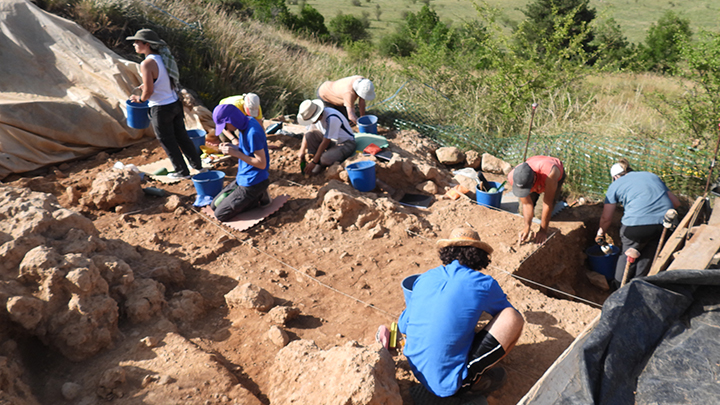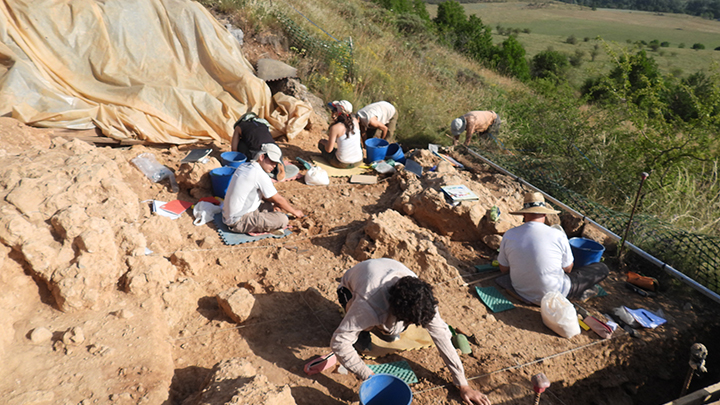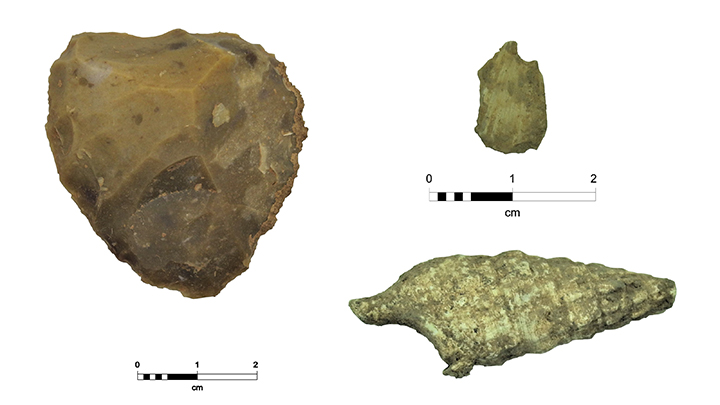SERP researchers have found one of the key points for crossing the Pyrenees during the Last Glacial Maximum

News
|
Culture
(31/07/2023)
The archaeological site of Montlleó, located in Prats i Sansor (Cerdanya), is older than previously thought. From 17 to 27 July, a team of archaeologists from the Prehistoric Studies and Research Seminar ( (SERP) of the University of Barcelona, under the direction of researchers Marta Sánchez de la Torre, Cynthia Belén González and Xavier Mangado Llach, excavated this open-air Upper Palaeolithic site and discovered the age of the basal level of the site: around 23,000 years ago, corresponding to the coldest climatic moment of the Last Glacial Maximum (LGM).

News
|
Culture
31/07/2023
The archaeological site of Montlleó, located in Prats i Sansor (Cerdanya), is older than previously thought. From 17 to 27 July, a team of archaeologists from the Prehistoric Studies and Research Seminar ( (SERP) of the University of Barcelona, under the direction of researchers Marta Sánchez de la Torre, Cynthia Belén González and Xavier Mangado Llach, excavated this open-air Upper Palaeolithic site and discovered the age of the basal level of the site: around 23,000 years ago, corresponding to the coldest climatic moment of the Last Glacial Maximum (LGM).
The SERP team, formed by 11 students and graduates in Archaeology from the UB, recovered numerous lithic tools characteristic of the Solutrean period — a phase rarely identified in Catalonia — along with more than thirty malacological remains of shells and marine snails used in individuals’ personal attire. This discovery shows that the Montlleó site, located on a hill above the plain, was a key point in the crossing of the Pyrenees during the Last Glacial Maximum, since the stone tools exhumed, as well as the malacology, show contacts between the coast and the interior, as well as between both sides of the mountain range.
Montlleó was occupied by a tribe of nomadic hunter-gatherers, who carried out several activities, such as butchering game or making tools from stones, bones or horns. Unlike the site of Castellot de Bolvir, no constructions were built in Montlleó, since in that prehistoric period only dismountable huts were built. However, by analyzing the remains, it is possible to differentiate the spaces according to their function.
These works has been financed by the four-year archaeological project of the Archaeological Service of the Catalan Government, and is supported by the Town Council of Prats i Sansor.
Montlleó was occupied by a tribe of nomadic hunter-gatherers, who carried out several activities, such as butchering game or making tools from stones, bones or horns. Unlike the site of Castellot de Bolvir, no constructions were built in Montlleó, since in that prehistoric period only dismountable huts were built. However, by analyzing the remains, it is possible to differentiate the spaces according to their function.
These works has been financed by the four-year archaeological project of the Archaeological Service of the Catalan Government, and is supported by the Town Council of Prats i Sansor.
Multimedia gallery

Procés d'excavació del jaciment de Montlleó (Cerdanya).

